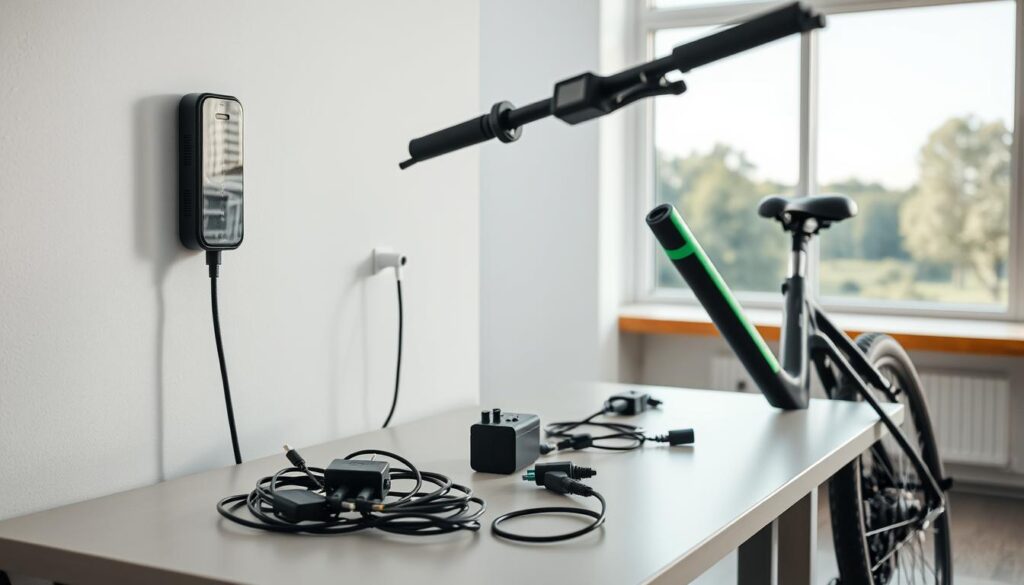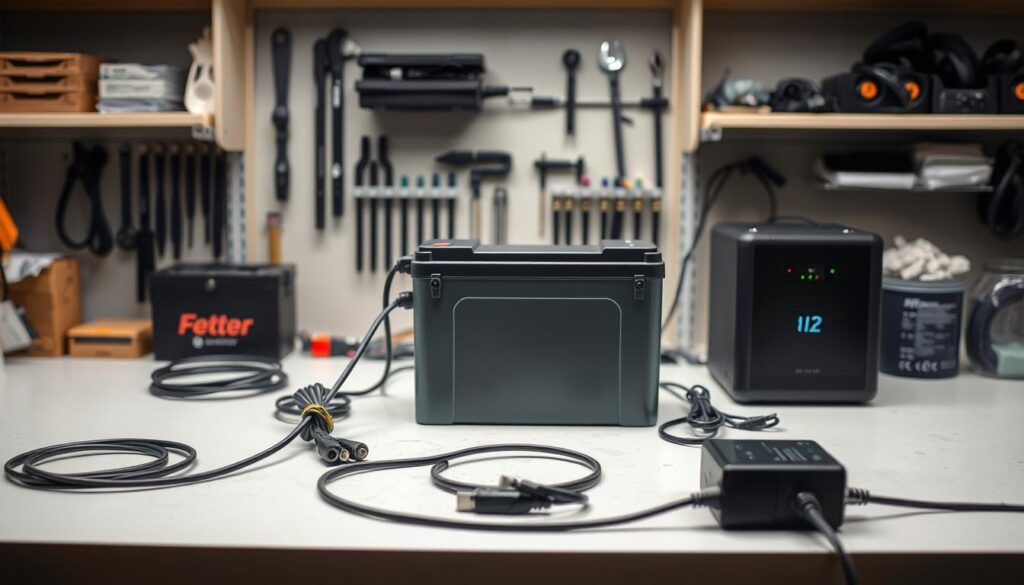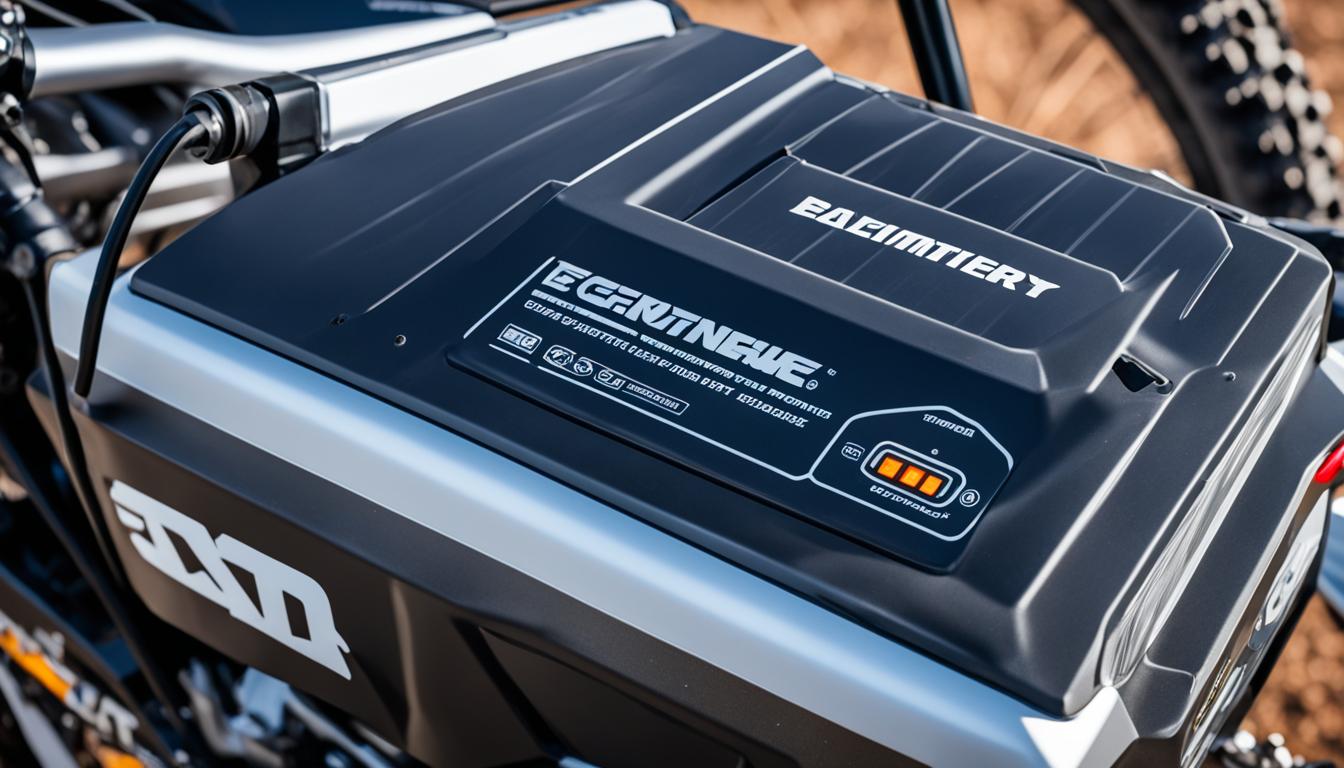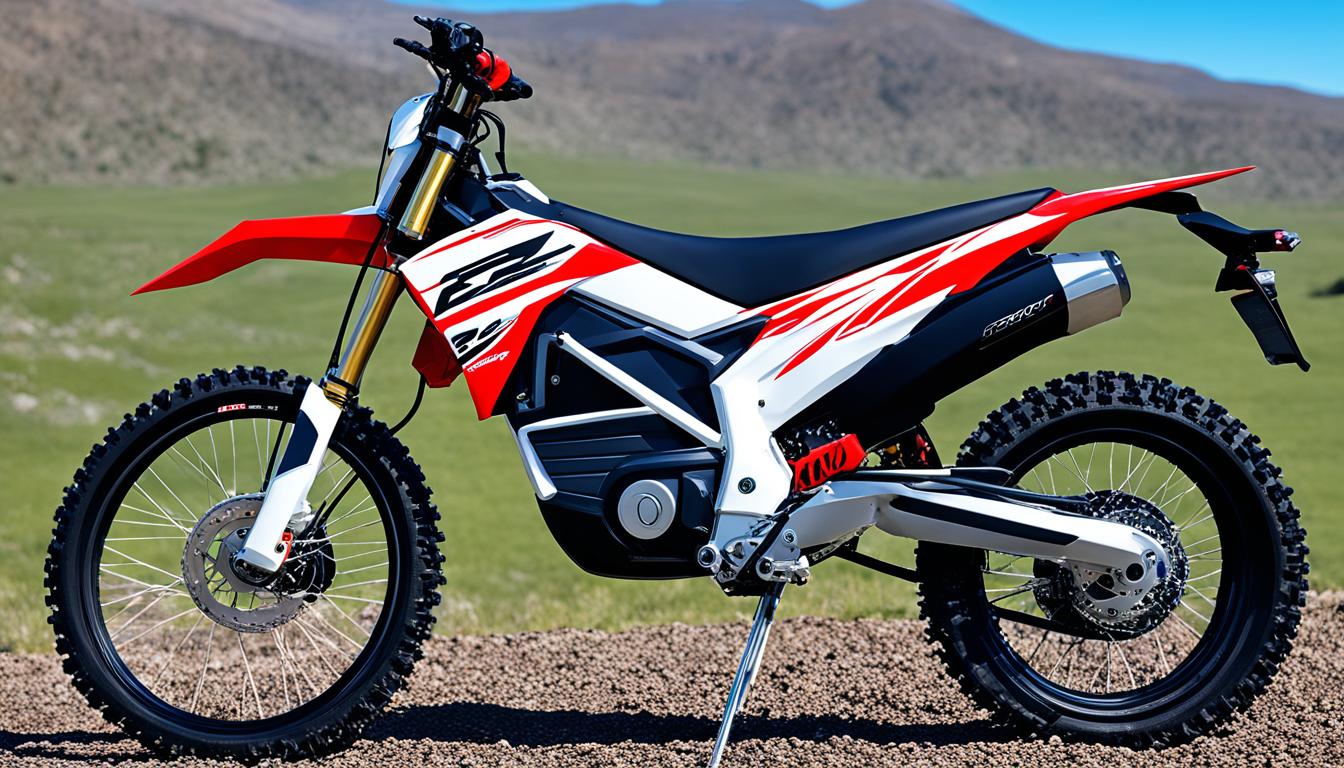Have you ever wondered why some electric bikes seem to last longer and perform better than others? The secret lies in the heart of the machine—the e-bike battery. Without proper care, even the most advanced electric bike can fall short of its potential.
Think of your battery as the engine of your ride. Proper maintenance can increase its lifespan by up to 30%, ensuring you get the most out of every charge1. Whether you’re commuting daily or embarking on long tours, understanding how to care for your battery can make all the difference.
From optimal charging practices to avoiding extreme temperatures, small adjustments can significantly enhance performance and safety. Ready to unlock the full potential of your electric bike? Let’s dive into the essentials of battery care for longer, smoother rides.
Understanding Your E-Bike Battery Basics
What makes some electric bicycles outperform others consistently? The answer lies in their lithium-ion power source. These advanced cells are the backbone of modern e-bikes, providing the energy needed for smooth rides and long distances.
Battery Components and Chemistry
Most e-bike batteries are made up of 18,650 cylindrical cells, often produced by industry leaders like Panasonic and Samsung2. These cells use lithium-ion chemistry, which is known for its high energy density and long battery life. Each cell works together to store and deliver energy efficiently.
A key component in maintaining performance is the Battery Management System (BMS). This system monitors and balances each cell, ensuring uniform performance and preventing issues like overcharging or overheating2.
How Battery Power Translates to Performance
The power of your e-bike is determined by its voltage and capacity, measured in amp-hours (Ah) and watt-hours (Wh). For example, a 36-volt system with a 10Ah capacity provides 360Wh of energy, offering a range of around 22 miles on a full charge3.
Higher watt-hours mean more energy, which translates to longer rides. Brands like Magnum and Trek use high-quality components to ensure their batteries deliver consistent performance, even on challenging terrains.
| Specification | 36V 10Ah | 48V 14Ah |
|---|---|---|
| Voltage | 36V | 48V |
| Capacity | 10Ah | 14Ah |
| Energy (Wh) | 360Wh | 672Wh |
| Estimated Range | 22 miles | 40 miles |
Understanding these basics helps you make informed decisions about your bicycle’s performance. With the right knowledge, you can maximize your rides and enjoy every journey to the fullest.
EV Bike Battery Care: Best Practices
Keeping your electric ride in top shape starts with smart charging habits. Proper care ensures your power source lasts longer and performs better. Let’s explore some actionable tips to help you get the most out of every ride.

Charging Guidelines for Maximum Life
To preserve your power source, avoid letting it drop too low. Charging before it reaches 30% can help extend its lifespan4. Always follow the manufacturer’s recommendations to make sure you’re managing it safely.
Topping up regularly is better than waiting for it to drain completely. This practice reduces strain and keeps it healthy4. Unplug once it reaches 80% to 100% to avoid overcharging4.
Using a compatible charger is critical. Mismatched voltages can lead to damage or extended charge times5. Keep it at room temperature, ideally between 60°F to 80°F, for optimal performance5.
Safety Tips for Daily Rides
Monitor your power source during riding to ensure it’s functioning well. Avoid charging when it’s hot, as this can cause damage5. Always follow proper procedures to keep it safe.
Store it at around 68°F (20°C) to maintain its health4. Extreme temperatures, whether hot or cold, can reduce efficiency and mileage5.
Regular maintenance and careful charging contribute to long-term health. For example, Magnum’s advanced Lithium-NCM batteries can achieve 800-1000 charge cycles with proper care4.
| Charging Tip | Benefit |
|---|---|
| Charge before 30% | Extends lifespan |
| Unplug at 80%-100% | Prevents overcharging |
| Use compatible charger | Avoids damage |
| Store at 68°F (20°C) | Maintains health |
Optimizing Performance with Temperature Management
Did you know that the temperature outside can significantly impact your ride’s performance? Extreme weather conditions, whether hot or cold, can affect efficiency and reduce your effective range6. Understanding how to manage these factors can help you get the most out of every trip.
Effects of Cold and Heat on Efficiency
Cold weather can slow down energy transfer, making it harder for your power source to deliver its full potential6. On the other hand, high temperatures can accelerate degradation, reducing overall lifespan7. Both extremes can lead to a noticeable drop in performance, especially during long rides.
In winter, you might notice a shorter range, but modern designs are built to handle these conditions safely6. Similarly, exposure to direct sunlight on a hot day can cause overheating, which is why it’s crucial to avoid leaving your equipment in the sun for extended periods7.
Strategies to Maintain Optimal Temperature
To keep your power source in top shape, store it at a stable room temperature when not in use7. This helps maintain its health and ensures consistent performance. Avoid exposing it to water or extreme weather conditions, as these can harm internal components6.
During winter rides, consider keeping your equipment insulated to prevent the cold from affecting its efficiency6. On hot days, use shade or cooling techniques to protect it from overheating7. These small adjustments can make a big difference in the long run.
By staying aware of the temperature and taking proactive steps, you can ensure your ride remains reliable and efficient, no matter the weather.
Smart Charging and Storage Habits
Smart habits in charging and storage can significantly extend the life of your power source. By following a few simple steps, you can ensure it stays in top condition for years to come.

Proper Charging Techniques and Timing
To charge battery effectively, avoid letting it drop below 20%. Keeping it between 20% and 80% is ideal for longevity8. Overcharging can lead to quicker wear, so unplug it once it reaches full capacity9.
Timing is also crucial. Charge it before it gets too low, and avoid leaving it plugged in overnight. This small step can make a big difference in maintaining its health10.
When to Remove and Store
If you’re not using your ride for an extended period, remove battery and store it properly. A charge level between 40% and 70% is recommended for storage8.
Store it in a cool, dry place, ideally between 50°F and 77°F10. Extreme temperatures can reduce its capacity and cause damage9.
Following the Manual
Always refer to the manufacturer’s manual for specific guidelines. Each model may have unique requirements for charging and storage10.
By adhering to these instructions, you can avoid common mistakes and ensure your power source remains efficient and reliable.
- Charge before it drops below 20%.
- Unplug once fully charged.
- Store at 40%-70% charge in a cool, dry place.
- Refer to the manual for specific guidelines.
Simple adjustments in how you charge battery and store battery can significantly enhance its lifespan. With these tips, you’ll enjoy longer, more reliable rides.
Debunking Common E-Bike Battery Myths
Many riders believe certain practices extend their bike battery life, but are these beliefs accurate? Let’s separate fact from fiction and ensure you’re making the most of your ride.
Myth vs. Fact: Battery Charging and Overheating
A common myth is that charging your system overnight damages it. In reality, modern batteries are designed with safety features to prevent overcharging11. Charging typically takes 3 to 6 hours, depending on the part and charger specifications11.
Another misconception is that overheating is inevitable. However, proper charging habits, like avoiding direct sunlight, can prevent this issue11.
Myth vs. Fact: Draining Batteries Completely
Some think draining the bike battery fully before charging improves its lifespan. This is false. Partial charges, especially when the level drops below 50%, are better for long-term health11.
Brands like Trek and Electra recommend regular charging to maintain optimal performance and range11.
Myth vs. Fact: Storage Charge Levels
Storing your system at full charge is often believed to be ideal. However, a charge level between 40% and 70% is recommended for storage11. This helps preserve the part and ensures it’s ready for your next ride.
Using genuine components and following manufacturer guidelines can also prevent damage and extend the range of your ride11.
By understanding these myths, you can make informed decisions and enjoy a longer-lasting, more efficient bike battery.
Maintenance and Troubleshooting for Longevity
Ensuring your ride stays reliable over time requires attention to detail and proactive maintenance. By recognizing early signs of wear and addressing them promptly, you can extend its life and avoid unexpected issues during your ride.
Identifying Signs of Degradation
One of the first indicators of wear is a noticeable drop in range. If your ride doesn’t last as long as it used to, it might be time to check its health12. Other signs include slower charging, frequent power dips, or the system shutting off unexpectedly12.
Regularly monitoring performance can help you catch these issues early. For example, Magnum’s advanced systems typically last 700 cycles before showing significant capacity loss13. Tracking your usage over time can give you a clear picture of when maintenance is needed.
When and How to Replace Your Power Source
Most systems last between 2 to 5 years, depending on usage13. If you notice a consistent decline in performance, it’s likely time for a replacement. Brands like Trek and Electra recommend upgrading when capacity drops below 80%14.
When replacing, ensure compatibility with your system. Using genuine components ensures safety and optimal performance12. Regular maintenance and timely replacements can save you from costly repairs down the line.
By staying proactive and addressing issues early, you can enjoy a longer, more reliable ride. Simple steps like tracking usage and following manufacturer guidelines can make all the difference in extending its life.
Conclusion
Taking care of your ride’s power source ensures it stays reliable for years to come. By understanding the chemistry of lithium-ion systems and following smart charging practices, you can maximize its lifespan and performance15.
Store it in a cool, dry room to maintain its health, especially during long-term storage16. Avoid extreme temperatures and keep the charge level between 20% and 80% for optimal results15.
Regular maintenance, such as checking for visible damage and using compatible chargers, can prevent issues and extend its life16. Replace it when performance declines to ensure safety and efficiency.
With these simple steps, you’ll enjoy smoother rides and protect your investment for many years. Start applying these tips today and experience the difference!
Source Links
- Get to Know Your E-Bike Battery: tips for extending battery life in daily use
- Complete E-Bike Battery Care Guide
- Electric Bike Batteries Explained
- The Complete Guide to E-Bike Batteries: Care, Maintenance, and Storage
- De-mystifying e-bike batteries | Electric bike battery care
- 9 Proven Tips for Electric Bike Battery Management
- E-Bike Battery Care: Maintenance & Performance Tips
- Maximize Your Electric Bike Battery Life with Velotric
- Maximizing Electric Bike Battery Life | Essential Tips for Longevity
- Ultimate Guide to E-Bike Battery Care: Storage and Charging Essentials
- Debunking the Myth: Electric Bikes Don’t Charge While You Pedal
- E-Bike Battery Maintenance: Ensuring Longevity and Performance
- The Complete Guide to E-Bike Batteries: Care, Maintenance, and Storage
- How to Make Your Electric Bike Last Longer – Consumer Reports
- E-Bike Battery Care: Maintenance & Performance Tips
- Comprehensive Guide to Electric Bike Battery Care


